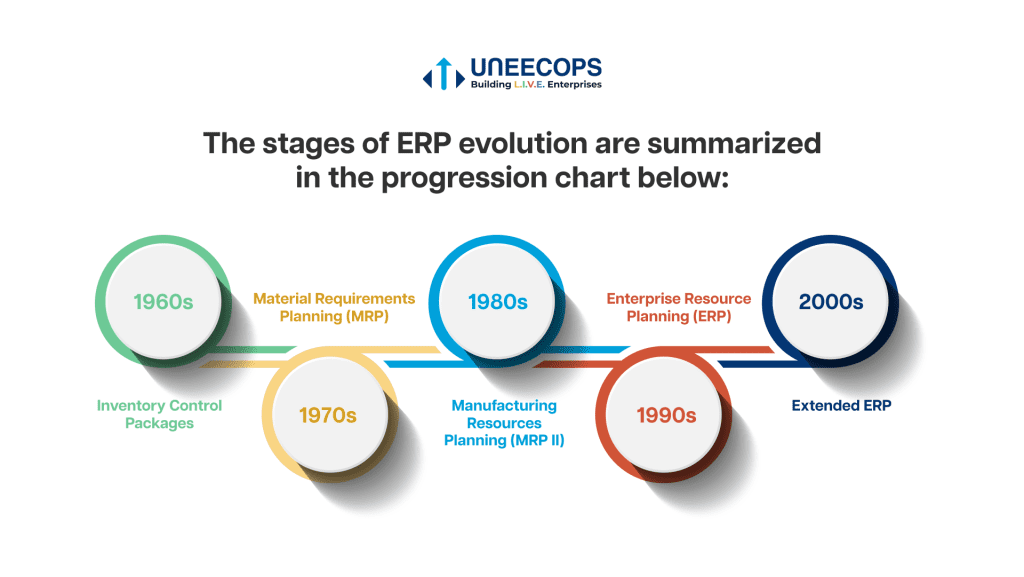Refinance Student Loan Best Rate
Unlocking the Best Rates: Refinancing Your Student Loan
Hey there! Are you feeling overwhelmed by your student loan payments? It might be time to consider refinancing your student loans. By refinancing, you can potentially unlock the best rates and save money in the long run. This process involves taking out a new loan with better terms to pay off your existing student loans. Keep reading to discover how refinancing could benefit you financially and help you achieve your goals faster.
Choosing the Right Refinancing Lender
When it comes to refinancing your student loans, one of the most important decisions you’ll make is choosing the right lender. With so many options available, it can be overwhelming to know where to start. There are a few key factors to consider when deciding on a refinancing lender that best fits your needs.
First and foremost, it’s essential to research and compare different lenders to find the best rate and terms for your financial situation. Look at the interest rates offered by each lender, as well as any fees or penalties associated with the loan. You’ll want to choose a lender that offers competitive rates and transparent terms to ensure you’re getting the best deal possible.
Additionally, consider the reputation and customer service of the lender. Read reviews from other borrowers to see how their experience was with the lender and whether they would recommend them. A trustworthy lender with good customer service can make the refinancing process smoother and more enjoyable.
Another important factor to consider is the flexibility of the lender. Look for a lender that offers flexible repayment options, such as the ability to make extra payments or adjust your payment schedule. This can be especially important if your financial situation changes in the future and you need more flexibility with your loan payments.
It’s also a good idea to consider the overall financial stability of the lender. Choose a lender that has a strong track record of financial stability and is unlikely to go out of business. You want to ensure that your loan will continue to be serviced properly and that you won’t run into any issues with your loan down the line.
Lastly, don’t forget to consider any additional benefits or perks offered by the lender. Some lenders may offer benefits such as interest rate discounts for setting up automatic payments, referral bonuses, or career coaching services. These additional perks can make a lender stand out from the competition and may be worth considering when choosing a refinancing lender.
Overall, choosing the right refinancing lender is crucial to ensuring you get the best rate and terms for your student loans. By taking the time to research and compare different lenders, consider factors such as interest rates, customer service, flexibility, financial stability, and additional benefits, you can make an informed decision that will set you up for financial success in the future.
Understanding Interest Rates for Student Loan Refinancing
When it comes to refinancing your student loans, understanding how interest rates work is crucial. Interest rates play a significant role in determining the overall cost of your loan and can greatly impact your monthly payments. The interest rate on a loan is essentially the cost of borrowing money, expressed as a percentage of the total loan amount. The lower the interest rate, the less you will pay in interest over the life of the loan. When you refinance your student loans, you have the opportunity to potentially secure a lower interest rate than what you were originally given.
There are two main types of interest rates that are typically offered for student loan refinancing: fixed interest rates and variable interest rates. Fixed interest rates remain the same for the entire term of the loan, providing predictability and stability in your monthly payments. This can be beneficial if you prefer to know exactly how much you will owe each month. On the other hand, variable interest rates can fluctuate over time based on market conditions. While variable rates may start lower than fixed rates, there is a possibility that they could increase in the future, leading to higher monthly payments.
When determining which type of interest rate is best for your student loan refinancing, consider your financial goals and risk tolerance. If you prioritize stability and want to avoid any surprises in your monthly payments, a fixed interest rate may be the better option for you. However, if you believe that interest rates will remain low or you are comfortable with the possibility of fluctuations, a variable interest rate might be more appealing.
It’s important to note that the interest rate offered to you for student loan refinancing will depend on various factors, including your credit score, income, and the length of the loan term. Lenders will evaluate these factors to determine the level of risk associated with lending to you and will adjust the interest rate accordingly. By maintaining a good credit score, providing proof of stable income, and choosing a shorter loan term, you may increase your chances of securing a lower interest rate.
Before refinancing your student loans, it’s essential to shop around and compare interest rates from multiple lenders. This will allow you to find the best rate possible and potentially save money over the life of the loan. Additionally, some lenders offer rate discounts for setting up automatic payments or having an existing relationship with the bank, so be sure to inquire about any potential discounts that may be available to you.
Overall, understanding interest rates for student loan refinancing is key to making informed decisions about your financial future. By familiarizing yourself with the different types of interest rates, assessing your own financial situation, and comparing rates from various lenders, you can secure the best rate possible and potentially save money on your student loans.
Comparing Offers for the Best Refinance Rates
When it comes to refinancing student loans, it’s essential to shop around and compare offers to ensure you’re getting the best rate possible. Here are a few tips to help you navigate the process and find the best refinance rate for your situation:
1. Start by researching multiple lenders: Don’t settle for the first offer you receive. Take the time to research and compare rates from multiple lenders to get an understanding of what’s available in the market. Look at both traditional banks and online lenders to see who can offer you the most competitive refinance rate.
2. Consider different loan terms: When comparing offers, be sure to look at the different loan terms available. Some lenders may offer lower rates for shorter loan terms, while others may have more competitive rates for longer terms. Consider how long you want to be making payments and choose a loan term that aligns with your financial goals.
3. Evaluate the potential for rate discounts: Some lenders offer rate discounts for things like setting up autopay or having a checking account with them. These discounts can help lower your overall interest rate and save you money over the life of the loan. Be sure to factor in any potential discounts when comparing offers to see which lender can offer you the best rate.
4. Compare fixed and variable rates: When refinancing student loans, you’ll typically have the option to choose between a fixed or variable interest rate. Fixed rates stay the same for the life of the loan, while variable rates may fluctuate up or down based on market conditions. Consider your risk tolerance and financial situation to determine which type of rate is best for you.
5. Look for prepayment penalties: Some lenders may charge prepayment penalties if you pay off your loan early. This can negate any savings you might have gained from refinancing at a lower rate. Be sure to inquire about prepayment penalties when comparing offers and choose a lender that doesn’t penalize you for paying off your loan ahead of schedule.
By taking the time to compare offers from multiple lenders and considering all aspects of the loan terms, discounts, and potential penalties, you can ensure you’re getting the best refinance rate possible for your student loans. Don’t rush the decision process and be sure to ask questions if anything is unclear. Refinancing your student loans can save you money in the long run, so it’s worth taking the time to find the best rate for your financial situation.
How Credit Scores Affect Your Ability to Get the Best Rates
Your credit score plays a crucial role in determining the interest rate you will receive when refinancing your student loans. Lenders use your credit score as a gauge of your creditworthiness, which helps them assess the risk of lending you money. Generally, the higher your credit score, the lower the interest rate you will qualify for. This is because lenders view borrowers with higher credit scores as less risky, making them eligible for better loan terms.
A credit score is a three-digit number that ranges from 300 to 850, with higher scores indicating better credit history and financial responsibility. Factors that influence your credit score include payment history, credit utilization, length of credit history, new credit inquiries, and types of credit accounts. It’s important to understand how each of these factors impacts your credit score, as it can affect the interest rate you receive when refinancing your student loans.
If you have a good credit score (typically 700 or above), you are more likely to qualify for the best rates available from lenders. A higher credit score demonstrates to lenders that you are more responsible with managing your finances and are less likely to default on your loan. This makes you a desirable borrower in the eyes of lenders, who will be more willing to offer you lower interest rates and better loan terms.
On the other hand, if you have a lower credit score (typically below 650), you may struggle to qualify for the best rates when refinancing your student loans. Lenders consider borrowers with lower credit scores to be higher risk, which means they may offer you higher interest rates to offset the potential risk of lending to you. While it may still be possible to refinance your student loans with a lower credit score, you may face higher interest rates and less favorable loan terms than borrowers with higher credit scores.
Improving your credit score can help you qualify for better rates when refinancing your student loans. By making timely payments, reducing your credit card balances, and avoiding new credit inquiries, you can increase your credit score over time. Additionally, checking your credit report regularly for errors and disputing any inaccuracies can also help improve your credit score. Remember that while your credit score is an important factor in getting the best rates when refinancing your student loans, it is not the only factor that lenders consider. Your income, employment status, and debt-to-income ratio also play a role in determining the interest rate you will receive.
Benefits of Refinancing Student Loans at a Lower Rate
Refinancing student loans at a lower rate can have numerous benefits for borrowers. By taking advantage of a lower interest rate, individuals can potentially save thousands of dollars over the life of their loan. This can lead to reduced monthly payments, allowing borrowers to free up cash flow and use it for other important financial goals. Additionally, refinancing can simplify the repayment process by combining multiple loans into one, making it easier to manage and keep track of payments.
Another benefit of refinancing student loans at a lower rate is the potential for a shorter repayment term. By securing a lower interest rate, borrowers may be able to pay off their loans faster and become debt-free sooner. This can help individuals save even more money in the long run by reducing the total amount of interest paid over the life of the loan. In addition, a shorter repayment term can also provide peace of mind and a sense of accomplishment for borrowers who are eager to eliminate their student debt.
Refinancing student loans at a lower rate can also provide borrowers with the opportunity to switch to a more favorable loan structure. For example, individuals may have the option to choose between fixed and variable interest rates, allowing them to select the option that best fits their financial goals and risk tolerance. Additionally, refinancing can also offer borrowers the chance to benefit from new loan features and benefits, such as the ability to make extra payments without penalties or access to borrower perks and discounts.
Furthermore, refinancing student loans at a lower rate can help individuals improve their credit score over time. By making consistent, on-time payments at a lower interest rate, borrowers can demonstrate responsible financial behavior and build a positive credit history. This can have a ripple effect on other areas of their financial life, such as qualifying for better rates on other loans or credit cards. Ultimately, refinancing at a lower rate can not only save money in the short term but also have long-lasting positive effects on a borrower’s overall financial well-being.
Overall, the benefits of refinancing student loans at a lower rate are clear. From saving money and simplifying repayment to potentially improving credit scores and achieving debt-free status sooner, there are numerous advantages for borrowers to consider. By exploring refinancing options and taking advantage of lower rates, individuals can take control of their student loan debt and pave the way towards a brighter financial future.






